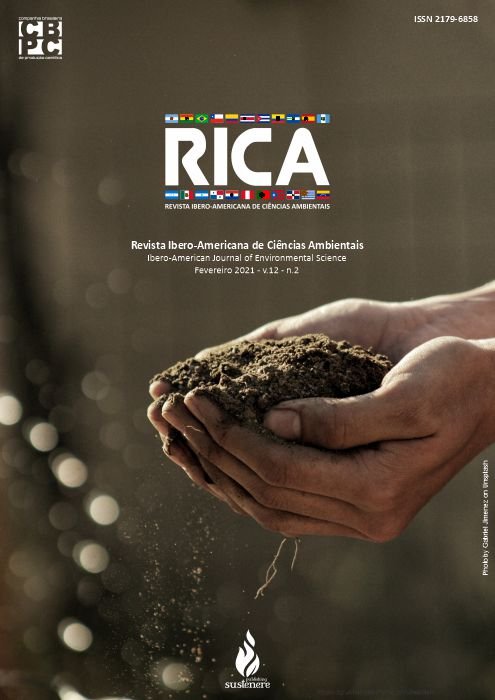Diet of sarapós of the family sternopygidae in beach environments in Rio Negro, Amazonas
DOI:
https://doi.org/10.6008/CBPC2179-6858.2021.002.0041Keywords:
Beaches, Food, Sarapó, DietAbstract
The beach environments in Central Amazonia appear in an apparent way on the bench of rivers, paranás and lakes, through the alternation of the water level, which occurs from the hydrological cycle, appearing during the terrestrial seasonal phase better known as the ebb and flow periods dry. These habitats provide shelter and a source of food for a diverse and abundant ichthyofauna. Among the species of fish that inhabit the beach environments, the fish of the order Gymnotiformes stand out, which are popularly known as sarapós or electric fish, the latter being, due to the ability to generate an electric charge current for electrolocation and social interactions, mainly for the family Sternopygidae, used in this research. Studies about the Gymnotiformes' eating habits and diet are scarce and this lack of knowledge due to the history of life, behavior and ecology are the main points for the lack of understanding of the researches carried out, therefore, this study is essential for a better understanding of the feeding habits of the species Eigenmannia macrops, Eigenmannia trilineata and Eigenmannia virescens collected from Rio Negro beaches. A total of 180 stomachs were analyzed, 60 of each species and all presented some food item, with the stomachs being partially full (0-25%) even distended (75-100%), as was the case for E. macrops specimens. The most frequent food item was that of insects, followed by undefined (digested) material and finally the plant material item. From the IAi (%), the species E. macrops (> 70%) and E. virescens (> 70%) can be classified in the trophic guild as insectivores and E. trilineata as omnivores with a tendency to become insectivores. The calculated value for trophic niche amplitude showed an intermediate level for E. trilineata and E. virescens and low for E. macrops, therefore having the greatest dissimilarity regarding the items consumed. As for the condition factor, the species E. macrops demonstrated that it was in good welfare conditions even in the dry season, whereas the species E. trilineata and E. virescens showed values below zero, which did not prevent them from exploring food resources.
Downloads
Downloads
Published
Issue
Section
License
The CBPC - Companhia Brasileira de Produção Científica (Brazil CNPJ: 11.221.422/0001-03) the material rights of the published works. The rights relate to the publication of the work anywhere in the world, including rights to renewals, expansions and dissemination of the contribution, as well as other subsidiary rights. All electronically published works may subsequently be published in printed collections under the coordination of this company and / or its partners. The authors preserve the copyright, but are not allowed to publish the contribution in another medium, printed or digital, in Portuguese or in translation.









